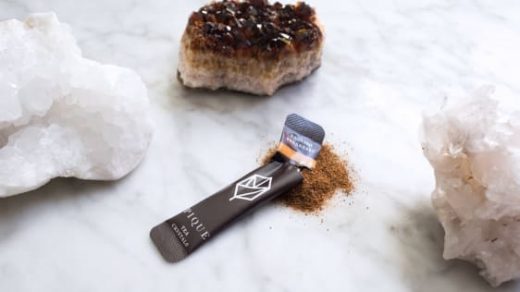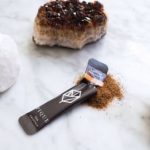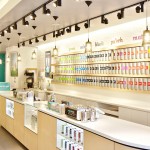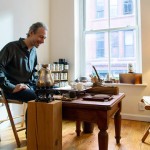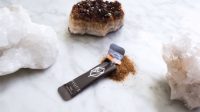Tea-Brewing Hasn’t Changed In 100 Years. These Tea Crystals Could Change That
They say that 90% of our bodies are made of water. In my case, I’m pretty sure that I’m mostly made of tea.
I’m half Chinese and half Indian, so my childhood was spent guzzling oolong, Assam, or masala chai every day. In both cultures, tea-making is a ritual, one that involves steeping tea leaves in hot water until the flavors have been properly infused. The last significant innovation in the world of tea was the ingenious idea of putting leaves into a little bag–and that happened a century ago. But regardless of whether you use loose leaf or bagged tea, the process, if done correctly, can take a lot of time, which is lovely if you’re in a pensive mood.
But if you’re in a rush–like I am most mornings–it can be a drag.
To that end, I have good news for the tea drinkers of the world. A San Francisco-based startup called Pique has developed tea crystals that dissolve into water within seconds, totally eliminating the brewing process. This also means that you don’t have to worry about steeping the tea too long (resulting in a bitter taste) or too short (which makes it too watery). Pique has managed to replicate this approach across every single type of tea, from green to black to herbal. I’ve sampled every tea with the range and can attest that the flavor is indistinguishable from tea steeped in a bag.
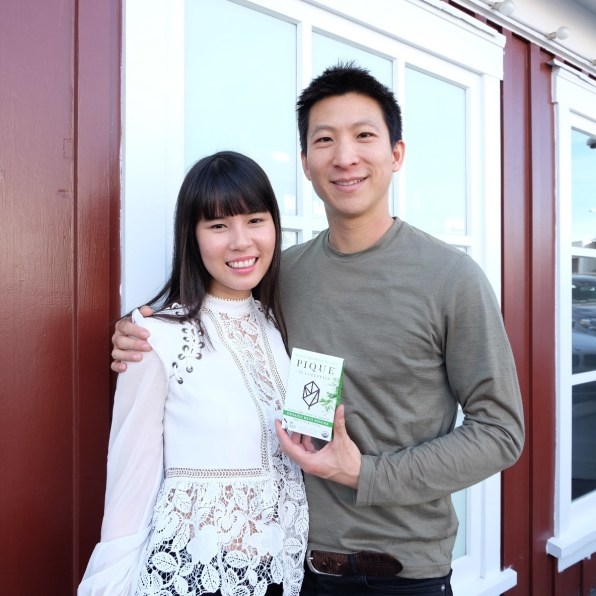
Pique was founded two years ago by Simon Cheng, who studied Chinese history as an undergrad at Harvard. He spent many years traveling throughout China and the rest of Asia, where tea was readily available. “Tea-drinking was fairly effortless because it was brewed for you,” he says. “Even in offices, there’s usually a tea lady or gentleman who comes to fill everyone’s cup in the morning and throughout the day.”
Cheng was also fascinated by the health benefits of tea. Tea is rich in antioxidants, which protect the body from the effects of pollution. Scientific studies have also shown that it may also reduce the risk of heart disease and bone loss, while also helping to boost immunity and battle cancer. However, you need to drink large quantities of tea to experience any of these benefits.
“In Asia, I saw that people were drinking tea at such frequency, and it was of such good quality that they were able to reap the benefits of it,” Cheng says. “Most tea drinkers in the United States and in some parts of Europe don’t drink enough of it for it to truly be helpful.”
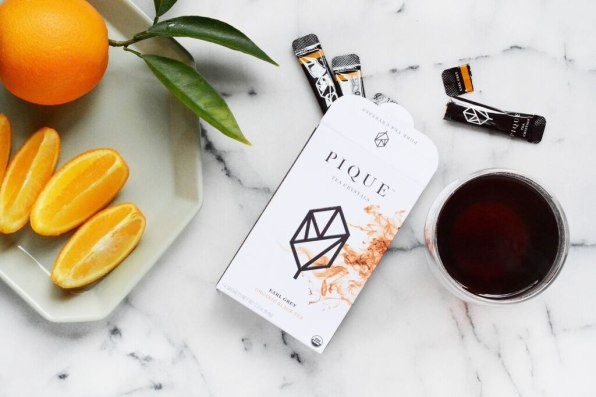
A Wakeup Call
Cheng graduated, went to work in a VC firm, then got a Stanford MBA, and then, one day, he got sick. Between his twenties and thirties, he was working so hard to get into top schools and thrive at his job that the stress began to wear him out. Eventually, both his lungs collapsed and he had to undergo three surgeries. He also experienced sleep apnea, a condition that affects your breathing during sleep. Cheng was on a constant cocktail of antibiotics.
“I decided that I was done with this lifestyle, and I wanted to take a completely different approach to my health and well-being,” he says.
This brought him back to tea. After the trauma of being hospitalized, he spent two years in Asia to learn about non-Western approaches to health. In the Yunan Province in China, he came across a local doctor who used tea as a medicine by creating crystals that could be dissolved into water. “He had overcome several technological challenges to creating these crystals,” Cheng explains.
It worked like this: Tea was brewed in very large amounts until all the water evaporated, leaving a tea paste. This paste was dehydrated, and when someone wanted to drink it, it would be rehydrated with more tea. This created a beverage that was highly concentrated, which allowed the drinker to receive the maximum possible benefits from the tea.
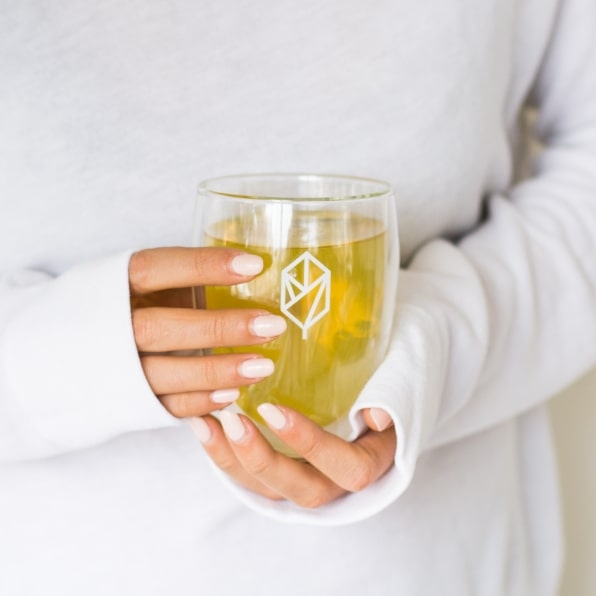
Cheng was inspired by this approach, but found that the heating of the tea leaves actually damaged them. So he developed a proprietary cold-brewing process that involves applying some pressure and very low heat to create crystals. The customer can then open a packet, pour it into hot or cold water, and immediately consume it.
There are some obvious benefits to this method. For one thing, it saves time. But this approach also ensures that all the nutrients in the tea stay intact, and you get six times the antioxidants that you would from a regular tea bag. The process also screens for heavy metals and pesticides, to ensure that the tea is pure. And the fact that the tea is contained within an airtight packet also means that mold and bacteria don’t grow, something that is actually very common in loose leaf tea and bags.
“Our goal is to help people in the modern world be able to get the amount of tea that they need to achieve the benefits from it,” Cheng says. “We also want it to be as safe and potent as it can be.”
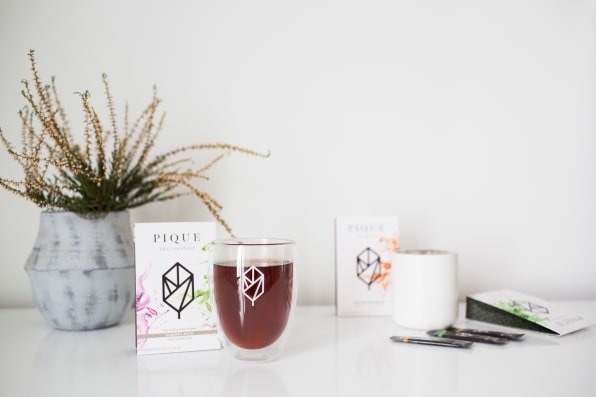
The Reviews Are In
So far, the concept has been a hit, particularly in the natural foods industry. Cheng and his cofounder (and wife), Amanda Wee, secured a seed round of funding from First Round, Khosla, and Blueberry Ventures, though it did not disclose the amount. Pique was among the seven companies that made it into Chobani’s incubator, whose goal is to help startups trying to bring better food to more people.
Over the last two years, Pique has grown exponentially. Although this approach to making tea was different from what tea drinkers are used to, the concept seemed straightforward enough that supermarket buyers were eager to give it a try. Wee, the brand’s chief growth officer, has managed to get the product into 1,500 retail stores around the country, including Whole Foods, Wegman’s, and Sprouts, as well as onto Amazon and the the brand’s own website.
One box of Pique teas, which includes 14 packets, costs around $10, which comes down about to $0.70 a serving. This is more expensive than many basic teas, but it’s on par with many other premium tea brands and is certainly cheaper than, say, a Starbucks coffee.
But tea experts have also judged Pique’s tea to be objectively as good, or better, than teas that are steeped in leaves. It won three gold medals at the Global Tea Championships, which included criteria such as taste, convenience, and potency.
Cheng and Wee dream that, one day, tea crystals will become the main way that consumers drink tea. “There really hasn’t been much innovation in the world of tea since the tea bag was invented 100 years ago,” Wee says. “But for people who drink tea every day, we think this new approach could really improve their experience with the drink.”
As a tea addict myself, I would agree.
Fast Company , Read Full Story
(20)

